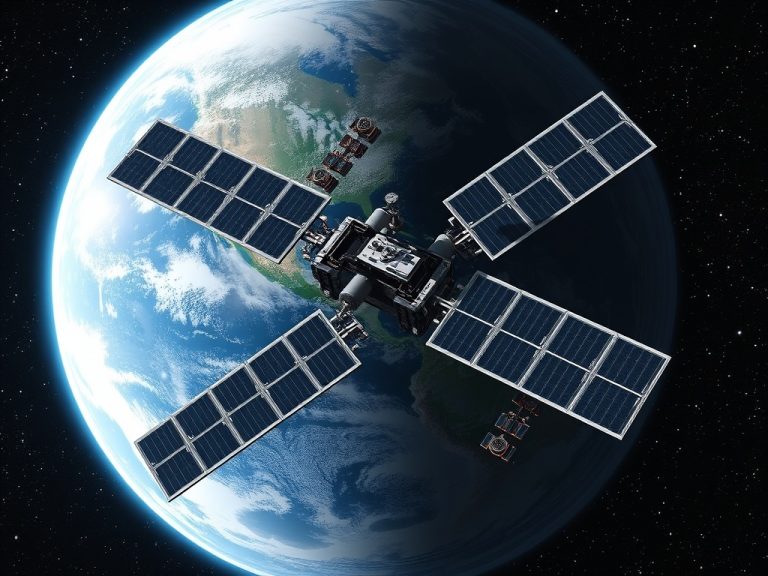
In today’s digital age, access to the internet is nearly as essential as electricity or running water. However, many remote areas still struggle with reliable connectivity. Satellite internet has emerged as a vital solution for bridging this digital divide. Here’s an in-depth look at the key benefits of satellite internet in remote areas.
1. Accessibility
One of the primary advantages of satellite internet is its ability to reach locations where traditional broadband services are unavailable. Unlike cable or fiber-optic connections, which require extensive infrastructure, satellite internet only needs a satellite dish and a clear line of sight to the sky. This makes it possible to provide internet access to rural communities, isolated homes, and even mobile users in remote regions.
Rural Connectivity
For many rural areas, laying down cables is not economically feasible. Satellite internet circumvents this issue, allowing users to connect almost anywhere. This is especially important as more people relocate to rural areas, seeking a quieter lifestyle while still needing internet access.
2. High-Speed Connectivity
Modern satellite internet providers offer high-speed connections that can rival traditional services. With advancements in technology, many satellite services now provide download speeds sufficient for streaming, gaming, and other data-intensive activities. This is particularly beneficial for remote businesses, schools, and healthcare facilities that rely on fast internet for their operations.
Streaming and Gaming
With the rise of online streaming platforms and gaming, high-speed satellite internet allows users in remote areas to enjoy entertainment options once thought impossible. This can enhance the quality of life in rural regions, providing leisure activities that connect users to broader communities.
3. Reliability
Satellite internet is often less susceptible to the disruptions caused by natural disasters or physical infrastructure damage. In areas prone to severe weather or where land-based internet services may fail, satellite connections can remain operational, ensuring that users have access to critical information and communication tools.
Consistent Service
While weather can affect satellite signals temporarily, the overall reliability of satellite internet remains high compared to some terrestrial options. Users in remote locations can count on consistent service during emergencies, keeping them connected to the outside world.
4. Emergency Communication
In emergencies, reliable communication is crucial. Satellite internet can be a lifesaver in remote areas during natural disasters, where traditional communication networks may be down. It allows for timely updates and coordination of rescue efforts, helping to ensure the safety of residents and responders alike.
Disaster Response
Satellite internet provides a critical link for emergency services, enabling them to communicate and coordinate effectively during disasters. This capability can save lives by ensuring timely assistance reaches those in need.

5. Economic Opportunities
Access to satellite internet can unlock economic potential in remote areas by enabling businesses to operate more efficiently and reach broader markets. Local entrepreneurs can leverage e-commerce platforms, expand their customer base, and access online resources that were previously out of reach. This connectivity can stimulate local economies and create jobs.
Business Growth
Small businesses, farmers, and artisans can use satellite internet to market their products online, compete in a global market, and utilize digital tools for business management. This can lead to greater economic resilience in remote communities.
6. Educational Access
Education is another field that benefits significantly from satellite internet. Remote schools and students can access online learning resources, participate in virtual classrooms, and communicate with teachers and peers around the world. This helps to enhance educational opportunities and reduce the disparity in access to quality education between urban and rural areas.
Lifelong Learning
Beyond K-12 education, satellite internet can facilitate adult education and vocational training, empowering individuals to develop new skills and improve their employability. This fosters a culture of lifelong learning in remote areas.
7. Enhanced Telehealth Services
Telehealth has become increasingly important, especially in remote areas where access to healthcare can be limited. Satellite internet facilitates telemedicine consultations, allowing patients to connect with healthcare professionals without the need for travel. This not only saves time and money but also improves health outcomes for rural populations.
Access to Specialists
Through satellite internet, patients can consult with specialists who may not be available locally. This can lead to better diagnosis and treatment options, significantly improving health care quality in underserved areas.
8. Environmental Benefits
Using satellite internet can also have positive environmental impacts. By reducing the need for extensive physical infrastructure, satellite services minimize land disruption and resource use associated with traditional internet installations.
Sustainable Solutions
As more individuals and businesses in remote areas connect through satellite internet, there is potential for promoting green technologies and practices, further contributing to environmental sustainability.
Conclusion
Satellite internet is a powerful tool for enhancing connectivity in remote areas. By providing reliable, high-speed internet access, it opens up a world of opportunities for education, economic growth, and emergency communication. As technology continues to advance, satellite internet will likely play an even more significant role in bridging the digital divide, ensuring that everyone, regardless of location, can participate in the digital age. The future of connectivity lies in harnessing these technologies to create more inclusive and empowered communities.
#internet #satellite #technology #innovation






